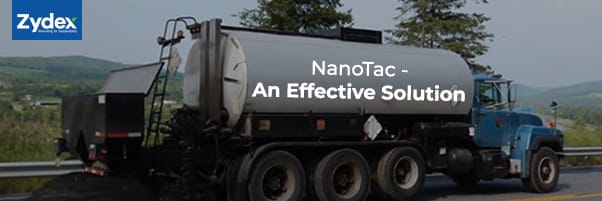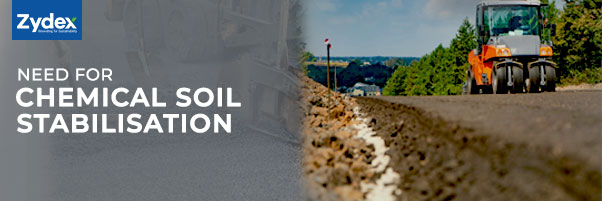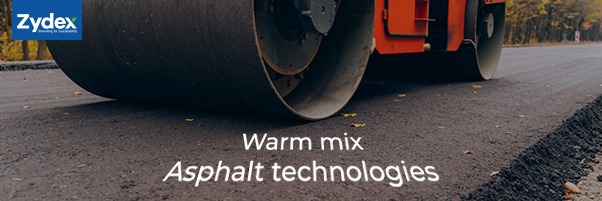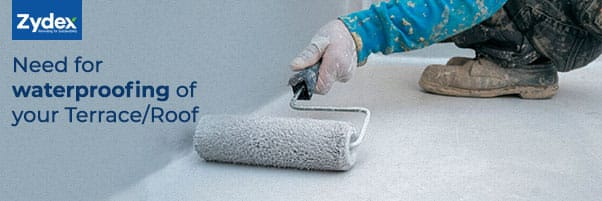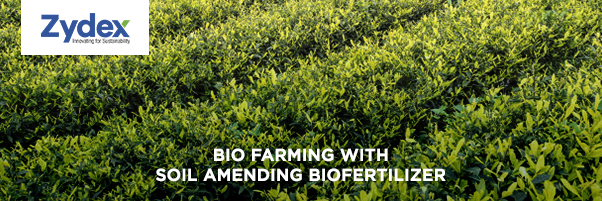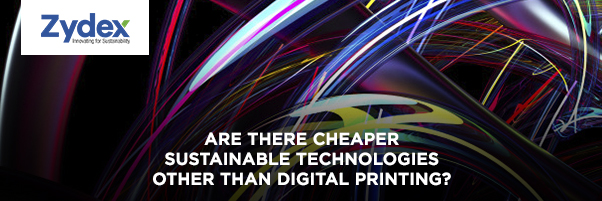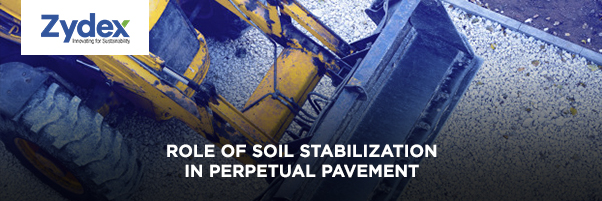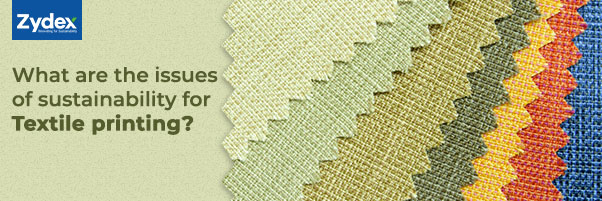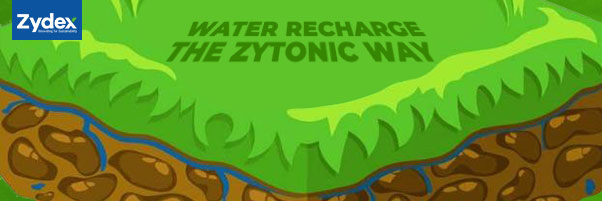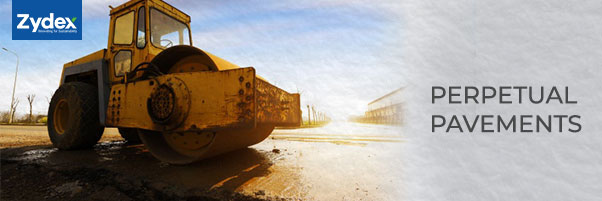Overview
Research has proven that the degree of bonding between pavement layers can significantly affect the overall performance of the pavement structure or overlay. Zydex Industries specifically addresses this unique problem of permanent bonding between asphalt layers with its asphalt additive – NanoTac.
In a study undertaken by the National Center for Asphalt Technology (NCAT) titled: “Effects of NanoTac Additive on Bond Strength and Moisture Resistance of Tack Coats” by Adam Joel Taylor, P.E. (2011), laboratory analysis measured the effects of NanoTac in a tack coat application. The results provide an interesting view into the performance of NanoTac’s organosilane chemistry and its unique bonding characteristics.
Image removed by sender.
NanoTac is an asphalt pavement additive derived from organosilane technology. NanoTac is designed to convert the surface of the treated material (untreated aggregate, soil, or HMA) from a water-loving (hydrophilic) surface to a water-repelling (hydrophobic) surface. The NanoTac additive is added to a diluted tack coat material by blending a small quantity of the additive with the water used to dilute the emulsion. This is designed to improve the water-resistance and bonding strength of the tack coat interface. The NanoTac additive is also designed to lower the surface tension of a cationic emulsion with which it is blended, reducing droplet size and improving spray coverage. NanoTac is also intended to wet, penetrate, and set quickly to reduce the problem of ‘tire pickup,’ a common problem with construction traffic driving over newly placed tack coats, removing the tack, rendering it ineffective.
Effects of Poor Bond Strength
Poor bonding between pavement layers has been known to decrease the structural bearing capacity of a pavement inducing pavement distresses and failures. Problems commonly associated with debonding are premature slippage cracking, top‐down cracking, and fatigue cracking. Past research shows debonding can reduce the pavement’s fatigue life by more than 50% prompting the need for extensive repairs such as full‐depth patches or complete reconstruction.
The best way to prevent debonding from occurring is through good construction practices. A quality tack coat material that provides sufficient bond strength should be used and uniformly applied to the pavement surface. Common issues with tack coat application include non‐uniform spray (often due to clogged nozzles on the spray truck) and tire pickup (tires from construction traffic removing the tack). Quality construction practices are critical to achieving a quality tack coat interface in the field.
The NanoTac Study
The study was performed to evaluate the effect of the NanoTac additive on tack coat bond strength, spreadability, dry time, tire pickup, and moisture susceptibility.
The study also evaluated the properties of a diluted cationic slow setting (CSS) emulsion containing the NanoTac additive versus the properties of a diluted emulsion with no additive.
Testing Procedures
The interlayer bond strength of each core was determined using ALDOT‐430 Standard Test Method for Determining the Bond Strength Between Layers of an Asphalt Pavement. The control emulsion application had a 30% AC residual while the NanoTac modified application had only a 10% AC residual.
Summary
Based on the results of this study, the following conclusions can be made:
The NanoTac modified emulsion (10% AC residual) with a lower residual AC content provided equivalent bond strength to that of a control emulsion (30% AC residual) on an unmilled (new HMA) surface.
All optimum bond strength values for both the control and NanoTac emulsions were greater than 150 psi (1.03MPa). Construction standards recommend a minimum value of 100 psi (0.69MPa) to have adequate bond strength in the field.
For a copy of this study, please contact your regional representative.


